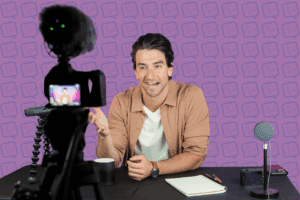The Moneyball Approach to Influencer Marketing

One of my favorite movies of all time is Moneyball. I’m a sports fan, and a baseball fan, so if you met me it’s probably pretty obvious I’d enjoy a movie about a rag-tag group of baseball players that competed for a title when no one expected they could.
Actually, I could care less about the team, the players or even the sport in this movie. What stands out to me is how outside-the-box thinking led to massive success. This is the type of outcome, as marketers, that we dream about.
If you are unfamiliar with the movie (or the book), it is about how the 2002 Oakland A’s bucked the trend of building a baseball team and tried a completely different strategy: they ignored the eye test and made decisions on players based entirely on data. They were laughed at, ridiculed and made many in the sport angry – but they succeeded. The best scene from that movie is when Peter Brand (played by Jonah Hill) lays out his unconventional line of thinking to Billy Beane (played by Brad Pitt), who is more than willing to try something different to gain an advantage.
The innovative thinking, the passion, the background music – this scene gives me chills!
It’s exactly how I think about influencer marketing.
Influencer Marketing is Dominated by “Medievil Thinking”
Let me go on my own little Peter Brand rant:
I believe there is an epidemic failure within the industry to understand the true value of influencers. When I talk to people about influencer marketing on YouTube, their minds almost always go straight to creators like PewDiePie.
PewDiePie is YouTube’s superstar. He has amassed 51 million subscribers and makes over $7 million a year just by creating videos and partnering with brands. Incredible.
A brand could get a ton of publicity by working with him, but is it really worth it?
A brand is going to have to pay an absurd amount of money to work with PewDiePie. Virtually the only metric that will cause the campaign to be a success is impressions. There is going to be a far larger chance that a brand fails to drive enough conversions to generate positive ROI compared to the fee of working with him.
Unfortunately, the prism many people view influencer marketing on YouTube through is views. The top creators get mega deals because a placement in one of their videos could drive millions of views.
A brand’s goal shouldn’t be to buy views, their goal should be to buy conversions, and in order to buy conversions they need to buy engagement. When I see PewDiePie, I see an imperfect understanding of engagement.
His videos will get 5,000,000 views along with 300,000 likes and 20,000 comments. These are enormous numbers, but not relative to his 50 million subscriber count. Using InfluenceLogic’s proprietary algorithms, he actually receives low marks for engagement. This is pretty common for giant influencers. Their followings grow so big that their engagement is never able to reflect their subscriber count. Since an influencer’s price is almost always determined by their subscriber count, there comes a point where they become too big to succeeded.
Switching Focus
If we switch our focus to engagement, we can start to see value in a variety of influencers regardless of what their subscriber count looks like.
Here’s an example using two fictional channels:
Terry the Tech Guy
- 45,000 subscribers
- 500-1,000 views a video
- 5-10 comments a video
- 10-20 likes a video
Robert’s Amazing Tech Reviews
- 8,000 subscribers
- 400-800 views a video
- 20-40 comments a video
- 50-100 likes a video
Terry is probably going to demand a higher rate just based off the number of subscribers he has, but we can clearly see Robert has more engagement. If Terry asks for $500 for a video and Robert asks for $150, it is pretty obvious who to choose.
I’ve written before about how much I love working with smaller influencers. A quote from that article:
(Micro-influencers) have up to 22.2 times more “buying conversations” that include product recommendations than an average consumer and they have twice the engagement rate as a power-middle influencer – eye-popping numbers for sure. I saw similar results with the micros I worked with on this campaign: CTRs hovered around 5%, compared to 1.2% for some of the bigger influencers I worked with.
It’s almost as if the Moneyball approach was made for influencer marketing as much as it was for baseball.
Analyze, Analyze, Analyze
Unfortunately, many brands are only measuring on views and don’t even take the time dive deeper into channels. It’s tedious work.
The amount of work Peter Brand put into discovering diamonds in the rough was staggering:
If you are looking to do it yourself, I’d start with this strategy I outlined that weights a channel’s views compared to the frequency in which they post. It’s a good way to get a look at which channels consistently get good views and which are just benefiting from one or two viral videos they may have posted.
Once channels getting consistent views have been identified, you can run a few simple weighted equations that will give you an idea of the engagement on the channel. Some popular ones;
- Likes/Views *100
- Comments/Views *100
- Likes/Subscribers * 100
- Views/Subscribers *100
These will give you numbers that will help you compare engagement between channels, relative to their audience. For example, I crunched the numbers between PewDiePie’s video I’M CHEATING?! and a video from one of my favorite tech vloggers, Krystal Key, Google Daydream View – $79 For This?! My findings showed me that Kyrstal Key scored higher in likes per subscriber, likes per view and comments per subscriber than PewDiePie. 10 Krystal Keys are still going to cost a lot less to work with than PewDiePie, but could very well deliver similar results.
Don’t Have a Analyst on Staff?
Not every brand is going to have the time or resources to crunch these numbers.
This is why I love InfluenceLogic’s software, it does all the tedious work for you. It uses data to assign engagement scores to any channel you find through its search engine (or manually enter). It’s the easiest way to make smarter influencer marketing decisions. It’s like having your own Peter Brand on staff. We’d love to show you how.
I believe there is a rockstar group of influencers that anyone can afford, because every other brand has overlooked them.
Happy hunting!





